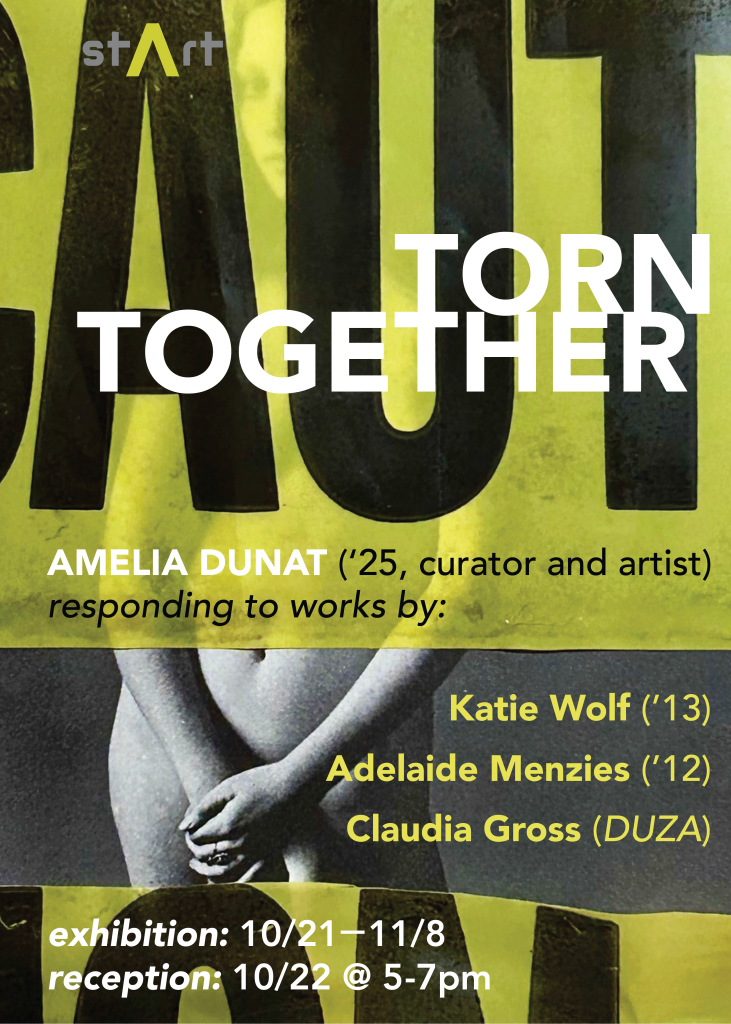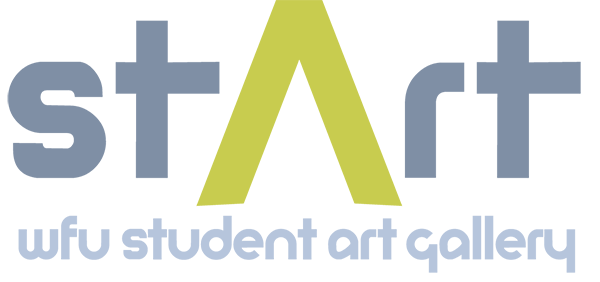
Torn Together
Amelia Dunat (’25)
OCTOBER 21 — NOVEMBER 8
stArt.rv, Reynolda Village
The act of tearing, usually seen as destructive, is part of the process of reclamation and recombination that is the essence of collage, where disparate elements, literally torn or cut apart, are brought together to form a new whole. My work, alongside that of Claudia Gross, Katie Wolf, and Adelaide Menzies, becomes a multi-vocal conversation– fragments of individual experiences, materials, and narratives pieced together. By being “torn together,” these works explore the idea that destruction is a part of creation, harmony is formed from disarray, and wholeness is found in what appears incomplete.
How do these fragments of past experiences—both personal and collective—shape the way we perceive the present in terms of self-identity? While collages merge abstract and narrative elements, they transcend linear storytelling by inviting diverse interpretations and fostering a more complex relationship between the viewer and the artwork. Claudia’s collages focus on the physicality of women and the cliched ideals of beauty, using cutting and layering techniques to comment on women as defined by their silhouette or those whose form is first destroyed and then reassembled. Rather than eschewing “beauty, ” her work aims to be realized on its own terms. Katie explores how collage preserves the decay of found, ephemeral, materials and prompts viewers to look closely in search of connections. Referencing art history and archival materials, her work considers how memory can be unreliable and how we feel compelled to preserve our own unique experiences. Adelaide’s collages are created from paper scraps collected from walking around new cities, with the method of collecting paper serving as a means of forming a personal chronicle. Ripping apart posters, Adelaide connects lines, shapes and color to create smaller, more intimate narratives of her travels.
As I pull materials from their original contexts —representing different experiences and memories—I’m finding a way to make them work together. I spent my summer in New York City searching for discarded materials, and paying close attention to objects I might typically overlook. I tore posters and advertisements off the street and pages from textbooks and magazines. A wet paint sign hanging in a subway stop, Gardner’s Art History textbook found on a brownstone stoop, and fashion magazines found in my apartment building’s lobby were just some of the materials I was able to forage. Using found materials reflects my connection to my surroundings as I explore the difference between cutting, ripping, and weaving not as a technique, but as an approach.
When things are torn apart, there is typically a sense of loss. In collage, I consider this not to be a loss but an opportunity for transformation. Tearing references the beauty in imperfections; gaps, rough edges and mismatched elements are visible and celebrated. In contrast to the torn elements of my collages, the cut pieces allow for precision and intentionality, creating clean lines that evoke a sense of order amidst the chaos. Together, cutting and tearing create a dynamic tension between loss and renewal, chaos and control, encouraging an exploration of how we navigate our own experiences of fragmentation and wholeness.

